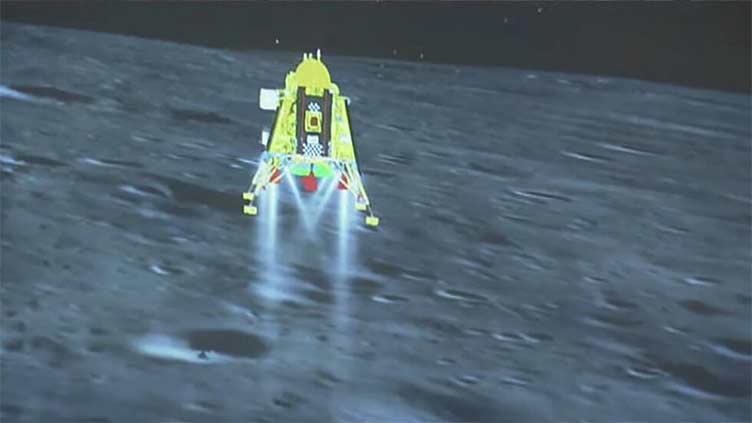Indian rover begins exploring Moon's south pole

World
Pragyan rolled out of the lander hours after touch down on the Moon surface
NEW DELHI (AFP) – India began exploring the Moon's surface with a rover on Thursday, a day after it became the first nation to land a craft near the largely unexplored lunar south pole.
Pragyan – "Wisdom" in Sanskrit – rolled out of the lander hours after the latest milestone in India's ambitious but cut-price space programme sparked huge celebrations across the country.
"Rover ramped down the lander and India took a walk on the moon!" the Indian Space Research Organisation (ISRO) posted on X, formerly known as Twitter, on Thursday.
The six-wheeled, solar-powered rover will amble around the relatively unmapped region and transmit images and scientific data over its two-week lifespan.
The successful touchdown of the Chandrayaan-3 ("Mooncraft-3") mission came just days after a Russian lander crashed in the same region.
It also comes four years after the previous Indian lunar mission failed during final descent, in what was seen at the time as a huge setback for its space programme.

The Indian mission took much longer to reach the Moon than the Apollo missions in the 1960s and 1970s, which arrived in a matter of days.
Chandrayaan-3 was launched on a less-powerful rocket and had to orbit the Earth several times to gain speed before embarking on its month-long journey.
- Future goals -
India has a comparatively low-budget space programme, but one that has grown considerably in size and momentum since it first sent a probe to orbit the Moon in 2008.

Chandrayaan-3 has a cost of $74.6 million – far lower than many missions from other countries and a testament to India's frugal space engineering.
In 2014, India became the first Asian nation to put a craft into orbit around Mars and plans to send a probe towards the sun in September.
ISRO is slated to launch a three-day crewed mission into Earth's orbit by next year.
It also plans a joint mission with Japan to send another probe to the Moon by 2025 and an orbital mission to Venus within the next two years.

